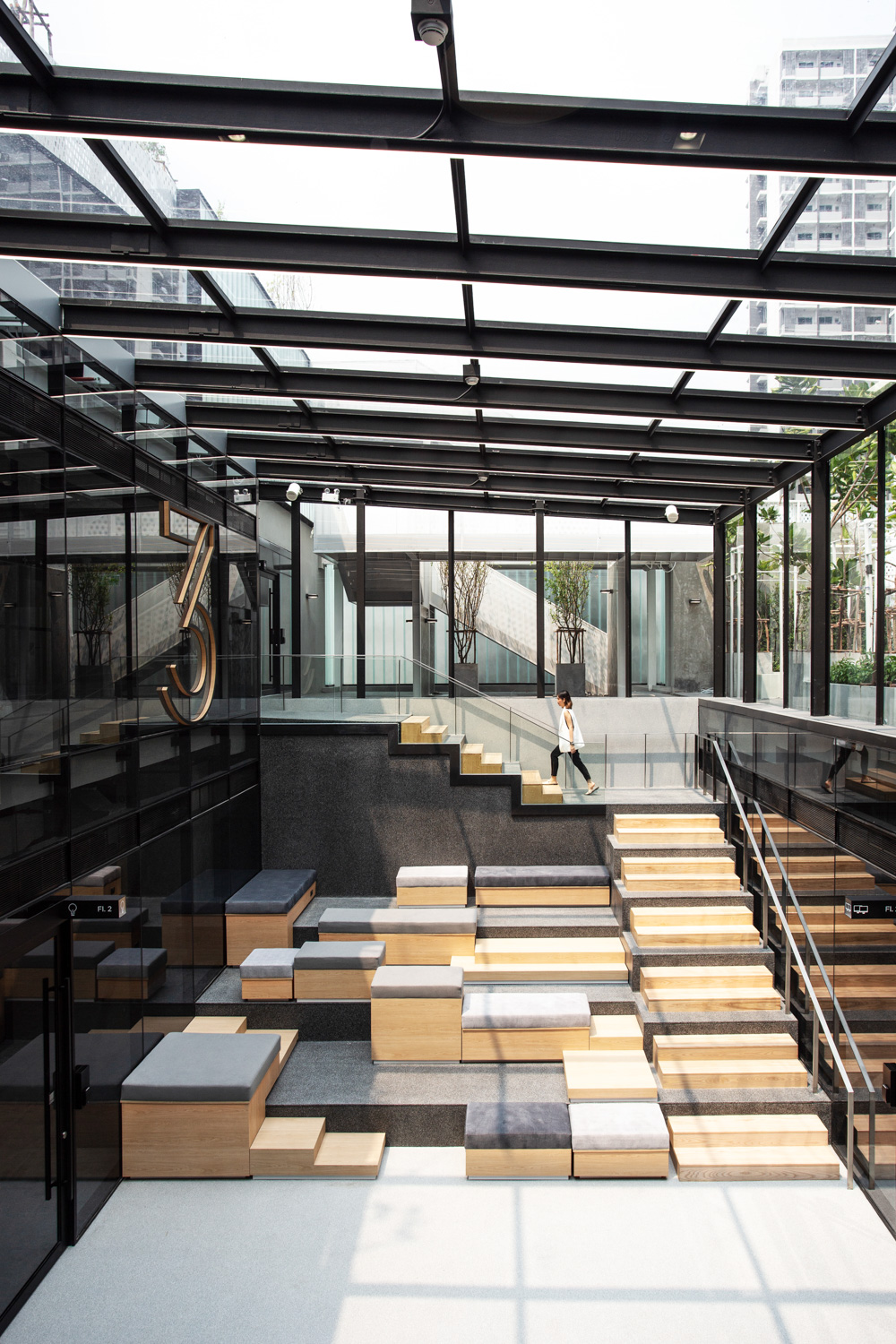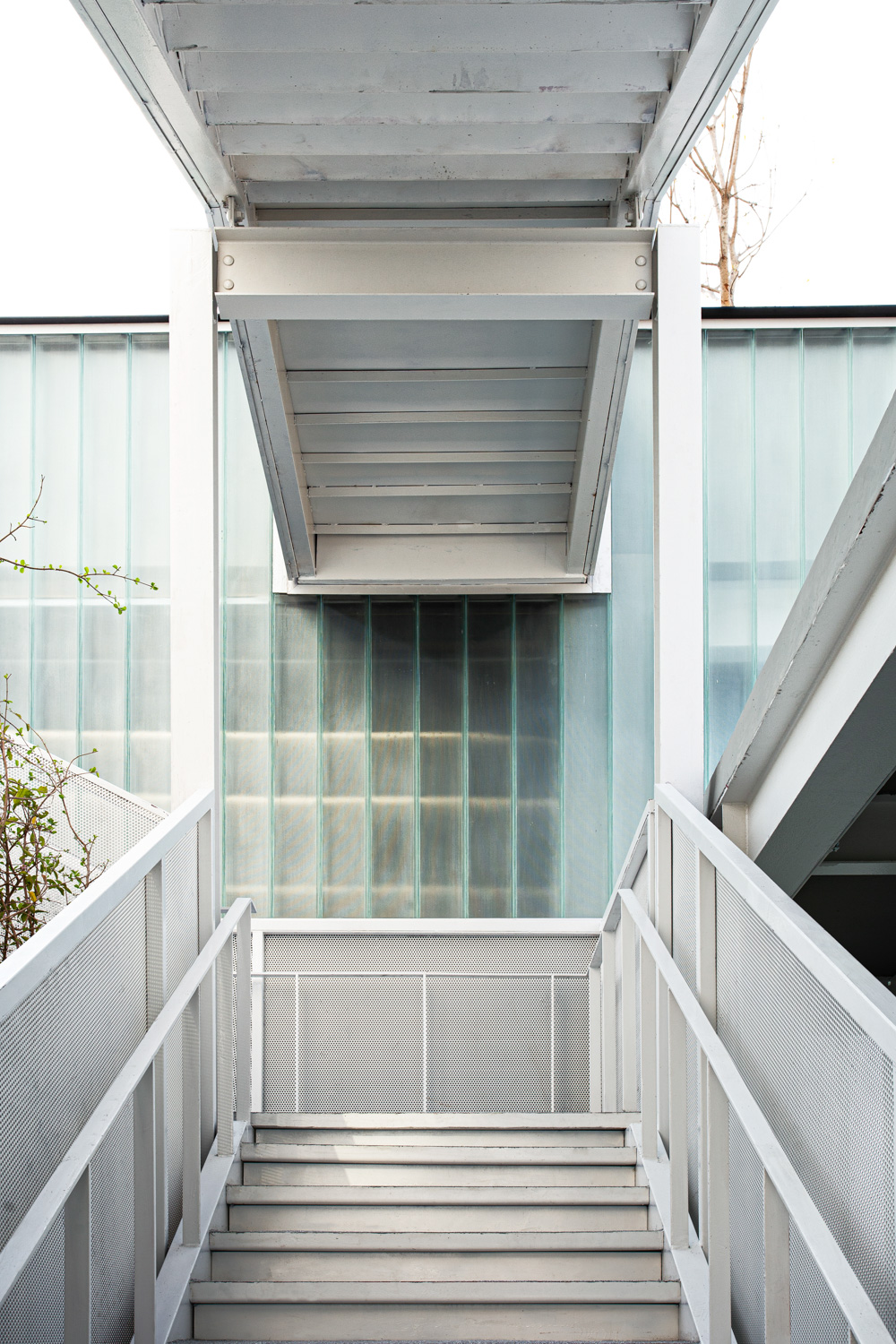KUNGWANSIRI TEJAVANIJA FROM PBM DESIGN STUDIO ILLUSTRATES TO US A STORY OF ‘GLASS’, WHICH IS MORE THAN A TRANSPARENT MATERIAL BUT AN INCREDIBLE INVENTION THAT CAN POTENTIALLY DEMOLISH EVERY CONSTRAINT IN DESIGN, AND ENABLE WHAT WE HAVE ENVISIONED FOR THE FUTURE OF ARCHITECTURE TO COME INTO BEING
TEXT: KUNGWANSIRI TEJAVANIJA
PHOTO COURTESY OF KUNGWANSIRI TEJAVANIJA
(For Thai, press here)
If we were to think of glass as only an architectural element used as a building’s skin or a partition dividing interior spaces, then we would end up using only a fraction of what this physically thin and visually delicate material can offer despite its unique and extraordinary qualities.
Glass was invented over 4,000 years ago and has been used in architecture for more than 2,000 years. Its role in architectural structures began in the form of windows. From a simple opening that brought in natural light, glass has been developed into an element of walls, roof structures, ceilings, lamp shades, floors, railings or even staircases. Glass’ utility has been expanded and used in interior decoration, landscape architecture all the way to building envelopes, furniture and signage. Glass is one of the few materials that can be used with almost every part of a building, being both a functional component and a decorative element. It brings a building a memorable impression, enabling an architectural design to tell its story in a memorable, harmonious narrative.

With its special physical characteristics as a transparent material, glass can be used to facilitate interactions between the indoors and the outdoors, allowing natural light to find its way into a building while still keeping interior spaces protected and safe. It is with these distinctive attributes that make glass almost irreplaceable. With the help of new emerging bodies of knowledge, innovations and technologies, the quality and efficiency of glass have been taken to another level. Glass has been developed to better filter the heat from sunlight, and contributes as a key factor to reduced interior temperature while still allowing natural light to make its presence inside interior spaces, maximizing a building’s energy saving ability. Consequently, a suitable use of glass can result in a building’s lessened energy consumption and need for air conditioning. The type of glass that can effectively reflect sun rays can also be applied and used with laminate glasses to deliver an even greater efficiency of safety as well as noise pollution control for each section of a spatial program.


Glass also helps turn designers and architects’ imagination into reality. With bending and formation techniques, glass can create architectural masses that go beyond boxy shapes and straight lines. Thanks to new, advanced technologies, glass can be manufactured with desired colors, patterns, images including the more technical details such as enamel edges, all of which can add more gimmicks and aesthetic elements to an architectural structure or interior space.

The continually developed qualities have caused glass to be constantly redefined, making it one of the materials that is associated with a sense of modernity. Glass’s characteristically modern attributes are why it is important for architects to stay updated with the material’s continual evolution. We have witnessed seemingly impossible ideas made possible with brilliant technologies from glass manufacturers. Their innovativeness has not only materialized but expanded our imagination, pushing existing limits and boundaries of architectural design.

Having explored and studied the intendancies and innovations in the world of ‘glass’, I have come to realized that ‘glass’ isn’t just a thin, transparent piece of material, but an incredible invention that can potentially demolish every constraint in design, and enable what we have envisioned for the future of architecture to come into being.


